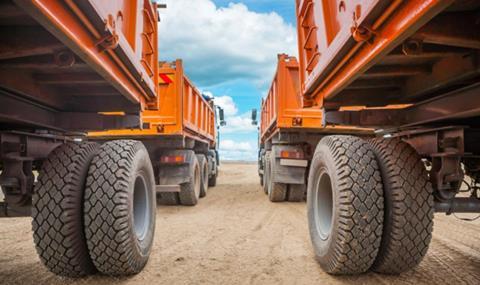
New HGV registrations increased by almost 13% year-on-year in 2021, driven by growth in sectors such as construction, according to the SMMT.
However, global shortages of semiconductors, coupled with supply constraints affecting steel and aluminium, hit availability, resulting in 7,571 fewer HGV units registered compared to the pre-pandemic average.
The SMMT said 37,163 units were registered last year, 57.1% of which were rigids and 42.9% artics, in line with market splits seen in previous years.
As construction bounced back, tipper demand rose by 32.5% to 3,808 units.
Tractor units were the most popular type of HGV, with 15,679 units, representing a market share of 42.1%, while refuse trucks increased by 2% to 2,067 units.
Curtainsiders declined by 6.3% to 2,452.
Read more
- Driver and semi-conductor shortages contribute to fall in HGV registrations in third quarter
- Slump in HGV registrations blamed on Covid and bumper 2019
- SMMT warns of “deeply concerning” drop in new HGV registrations in Q2
The SMMT also echoed growing concerns about the availability of non-zero HGVs in time for the 2040 ban on diesel alternatives, saying operators needed long-term certainty to make investment decisions.
It said fossil fuel vehicles still account for 99.8% of HGVs in use in 2020, a proportion last seen in the car parc in 2007.
Mike Hawes, SMMT CE, said: “With so much of our economy dependant on HGVs, the market’s return to growth is good news as getting more of the latest, high tech and low emission trucks onto the roads is critical to both air quality and climate change improvements.
“However, the sheer variety of functions HGVs perform, in logistics, construction and waste collection to name but three, illustrates how a range of technologies may be necessary to decarbonise road transport.
“Manufacturers are investing billions in such technologies, including battery electric, hydrogen and other alternative fuels but operators will need clarity, affordability and evidence on an infrastructure plan dedicated to their needs if this transition is to be delivered on time,” Hawes added.














